This newsletter is a reader-supported publication. We’re trying to keep things as free as possible, but if you enjoy what I write and want access to exclusive weekly recipes, and if you are at a point in your life to support our newsletter, please consider becoming a paid subscriber. Thank you!
In the time of food influencers, social media trends, and fast-paced digital consumption, I often find myself leafing through old cookbooks with yellowed pages and no photos, brimming with the wise advice of past food writers. One of my favorite cookbook authors, Ada Boni, provides timeless inspiration with her “Il Talismano della Felicità”, which translates as The Talisman of Happiness.
Born in Rome in 1881 to a well-off family, Ada Boni was one of the first Italian food writers. She was a food journalist, passionate gastronome, entrepreneur, and home cook, whose writing and recipes left a lasting legacy on the Italian food scene. Her first cookbook, “Il Talismano,” might be considered as being to Italian home cooks what “The Joy of Cooking” was to their American counterparts; it was a common gift for the young and inexperienced bride on her wedding day, a good omen for happiness at the table and in the marriage.
A Pioneering Food Writer
Boni’s uncle, Adolfo Giaquinto, was a journalist, poet, and acclaimed chef, and he introduced Ada to the joy of good food. Meanwhile, her husband, Enrico Boni, became her perfect partner-in-crime: he was a sculptor, painter, and photographer who was also passionate about cooking and gastronomy—and a personal friend of the French chef Auguste Escoffier.
In 1915, Boni and her husband founded Preziosa, a food magazine that might be considered the forerunner of modern blogs. In its pages, she shared recipes accompanied by personal glimpses into her daily life—her passions, poems, advice on “bon ton” (good manners), and home economics. Thousands of young Roman women subscribed, searching for advice, as they were novices in the kitchen. This prompted Boni to set up a cookery school for aristocratic Roman women.
In 1925, trusting the affection of their subscribers, the couple launched the idea of a cookbook based on a crowdfunding project: if at least 500 readers would commit to buying the cookbook, they would print it. Thousands of people enthusiastically signed on, and in 1929, after years of hard work, “Il Talismano della Felicità” was published.
“Il Talismano della Felicità” was the bible of the perfect housewife.
Ada Boni knew it all. It was a book written for those women who had enough money to hire a housekeeper, but not enough to hire a chef. Boni showed her readers how cooking was not simply the duty of a good mother and wife, but could also become a playful endeavor, a pleasure to discover and cultivate.
Initially, “Il Talismano” had 882 recipes, but since then, it has been constantly updated, adapting to more modern techniques, supermarkets, industrial ingredients, and fridges and freezers—surpassing 1000 recipes.
A Timeless Kitchen Guardian
Ada Boni was not part of my family cookbook collection; it was Pellegrino Artusi, the father of Italian cuisine and author of the fundamental “La Scienza in Cucina e l’Arte di Mangiar Bene” (1891), who dictated how every dish had to be made in our kitchen. So when I began collecting cookbooks, both new and old, I searched online for a second-hand copy of “Il Talismano.” When I received it, I was so surprised to find a book full of handwritten notes, with recipes underlined and marked as “very good,” stuffed with old advertisements cut from magazines used as bookmarks. I had just unearthed another grandma’s cookbook. From that moment on, Boni became another protective deity in my kitchen.
Why do I love her so much? Ada Boni is a witty woman.
She’s a lady from another era, yet her recipes range from traditional Italian dishes to more international ones, a hint of her curious approach to cooking. I recognize in her intros Jane Austen’s subtle irony; they have the same way of talking to landladies and young women of marriageable age—light-hearted and fun, though always appropriate.
“Il Talismano” was translated to English in 1950 by Matilde La Rosa as “The Talisman Italian Cook Book,” but it is an abridged version, with a selection of recipes that were considered more suitable to an American audeince. Many of the translated titles are named with French techniques, as they were more familiar than the Italian ones. Boni’s later work, “Italian Regional Cooking,” a precious collection of regional Italian dishes, is also available in English.
I was so lucky to find both of these translated gems in a pile of cookbooks that Tommaso’s aunt was giving away. Roberta is American; she moved to Florence in her 20’s, fell in love with Tommaso’s uncle Guido, and decided to stay forever. When she was younger, she was so keen on cooking from scratch that she bought cookbooks of all sorts from the second-hand stalls at the local flea market. I inherited her 1950 edition of “The Talisman Italian Cook Book,” a 1969 edition of “Italian Regional Cooking,” and her copy of Artusi’s cookbook, which is my third (but this makes for another story).
For those who like thrifty, practical, old-fashioned recipes, for those who are not scared off by a good scoop of butter, and for those who want to be transported to another era through witty words and advice, Boni’s book is a treasure trove of infallible recipes. I tried her tuna and breadcrumb stuffed carrots—a very unusual vegetable to stuff nowadays, but something I’ve been making since that first try—several of her cookies, a couple of Roman recipes, a rice pudding cake, and many more, and all came out fantastic.
Some of my favourite recipes from Ada Boni
Here in the newsletter I already shared her recipe for saltimbocca alla Romana, from “Italian Regional Cooking.” It’s a dish I’ve been making for years, easy and ideal for a weeknight’s dinner.
Saltimbocca alla Romana
Gnocchi alla romana. They are much simpler than I could have imagined, the smell of butter and cheese is exactly that of my memories, but the taste, the taste! The gnocchi are flavourful even on their own, with a delicate melt-in-your-mouth texture that makes the béchamel blanket completely superfluous.
Tuna and bread stuffed carrots. This recipe is an ode to the good housekeeping, to those women that are able to bring to the table a dish that fills the eyes and the belly with the few ingredients you can find in your kitchen on a Thursday morning (do you happen to go shopping on Friday afternoons and find your fridge crying in emptiness on Thursdays, right?).
Ricotta and peach cake. I wanted it fresher and suitable for a summer Sunday, so I replaced cinnamon and orange with lemon zest and lemon thyme. Then, since it was not as big and plump as I expected, I topped it with just caramelized nectarines: a Tuscan inspired and gluten free cheesecake – since I replaced the flour with potato starch. This is the cake for your summer afternoons!
Emilia-Romagna flooding emergency
The dramatic flooding in Emilia Romagna affected so many people, families, towns and businesses. To help the population, you can donate to the Red Cross, or read this article on The Florentine that shares many ways in which you can support the people of Emilia-Romagna after the severe flooding.
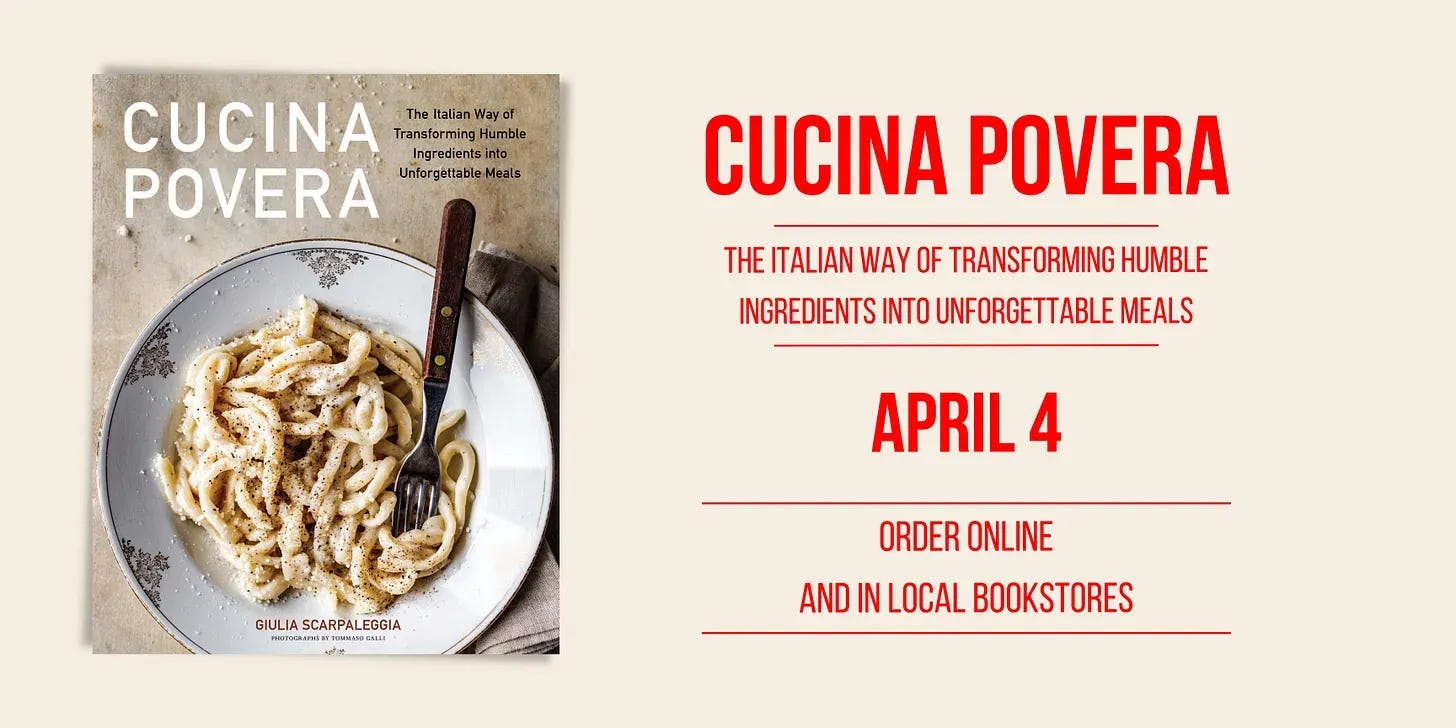
Finally Cucina Povera is available worldwide, even in Europe!
Amazon is finally stocking Cucina Povera also outside of North America—Italy included!—so have a look here if you want to order it. On the blog, you can also find links to more independent bookstores and other online stores.
In the UK, it is available at Blackwell, Waterstones, Bookshop.org, Foyles, Golden Hare Books, and other independent bookstores. In Holland you can find it on Bol.com. If you spot it online let us know!
And if you spot the book in a bookstore, please snap a pic for us, it will be like traveling vicariously through your photos!
Cooking Experiences in Tuscany with us
Do you know we also offer in-person cooking classes and edible experiences in Tuscany? Our calendar is slowly filling up, over 300 people have already booked a class this year, and there are only a few days left available during the high season. And yes, bookings for 2024 are already open, too!
Every meal will be an excuse to travel through Tuscany thanks to local recipes, memories and stories. Learn more about our cooking classes here.
Next available openings:
Wednesday, June 7th - Market to Table Cooking Class - 1 spot available
Thursday, June 8th - Tuscan Cooking Class - 4 spots available
Wednesday, July 19th - Market to Table Cooking Class - 4 spots available
Tuesday, July 25th - Tuscan Cooking Class - 4 spots available
Wednesday, July 26th - Market to Table Cooking Class - 6 spots available




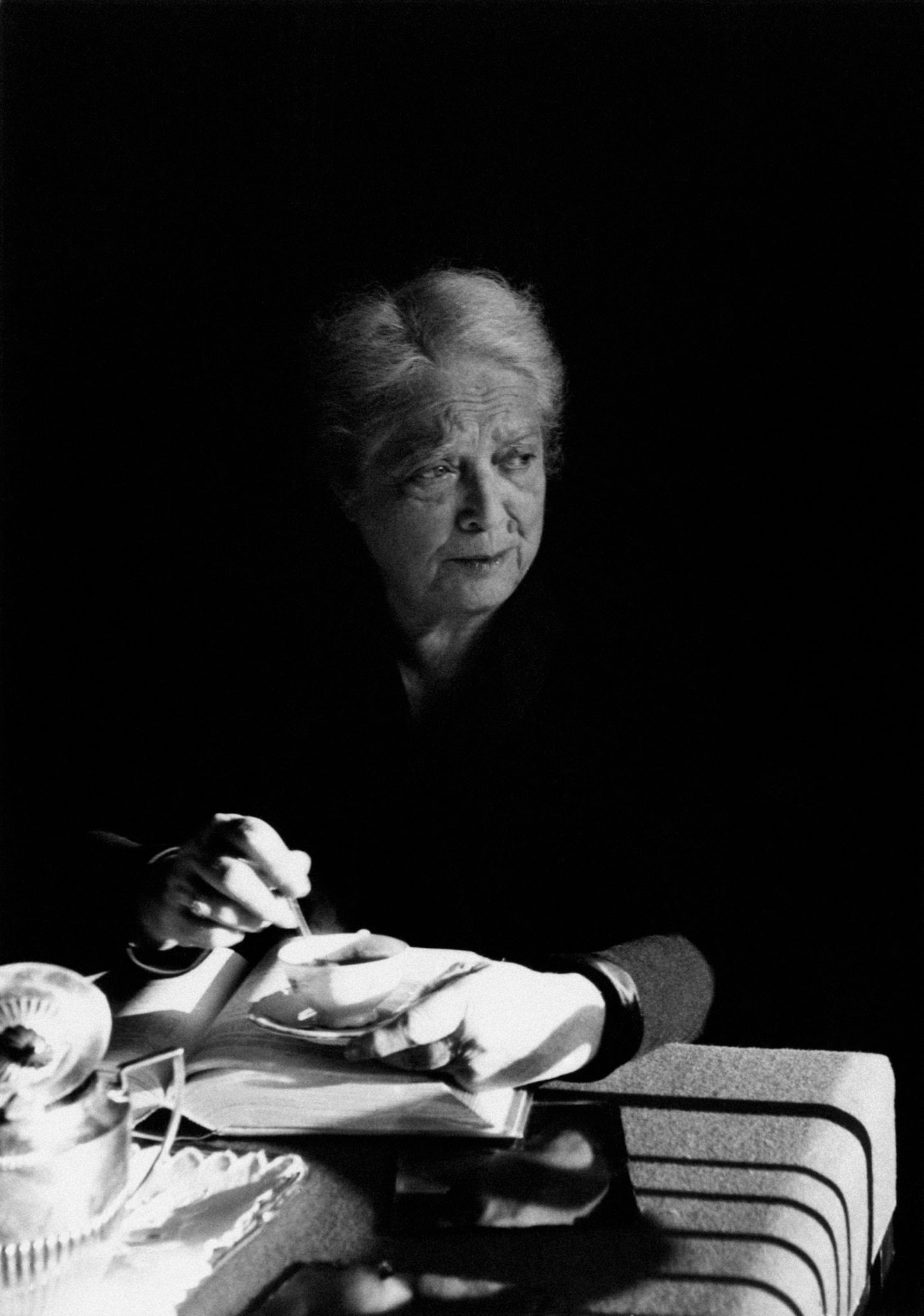
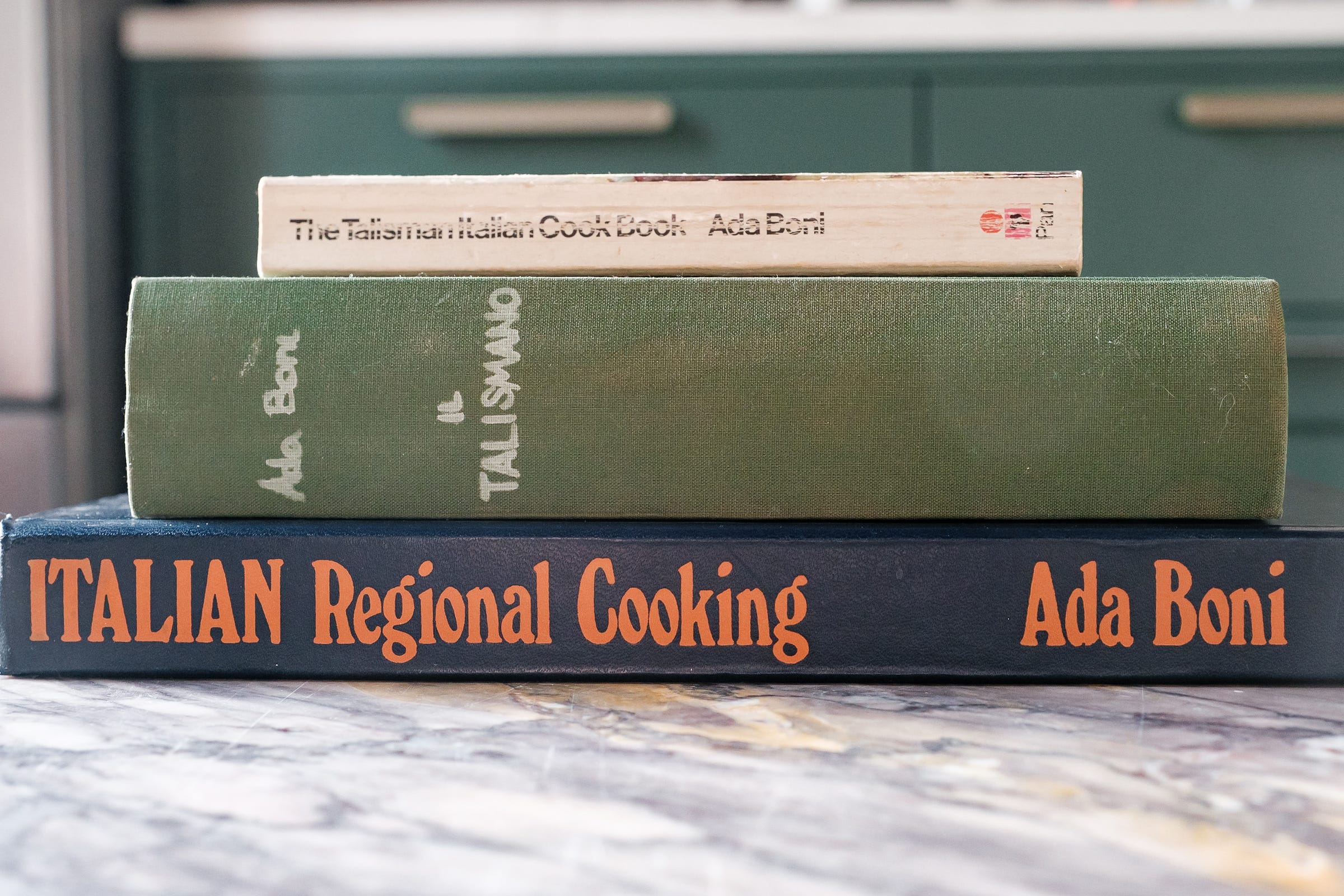
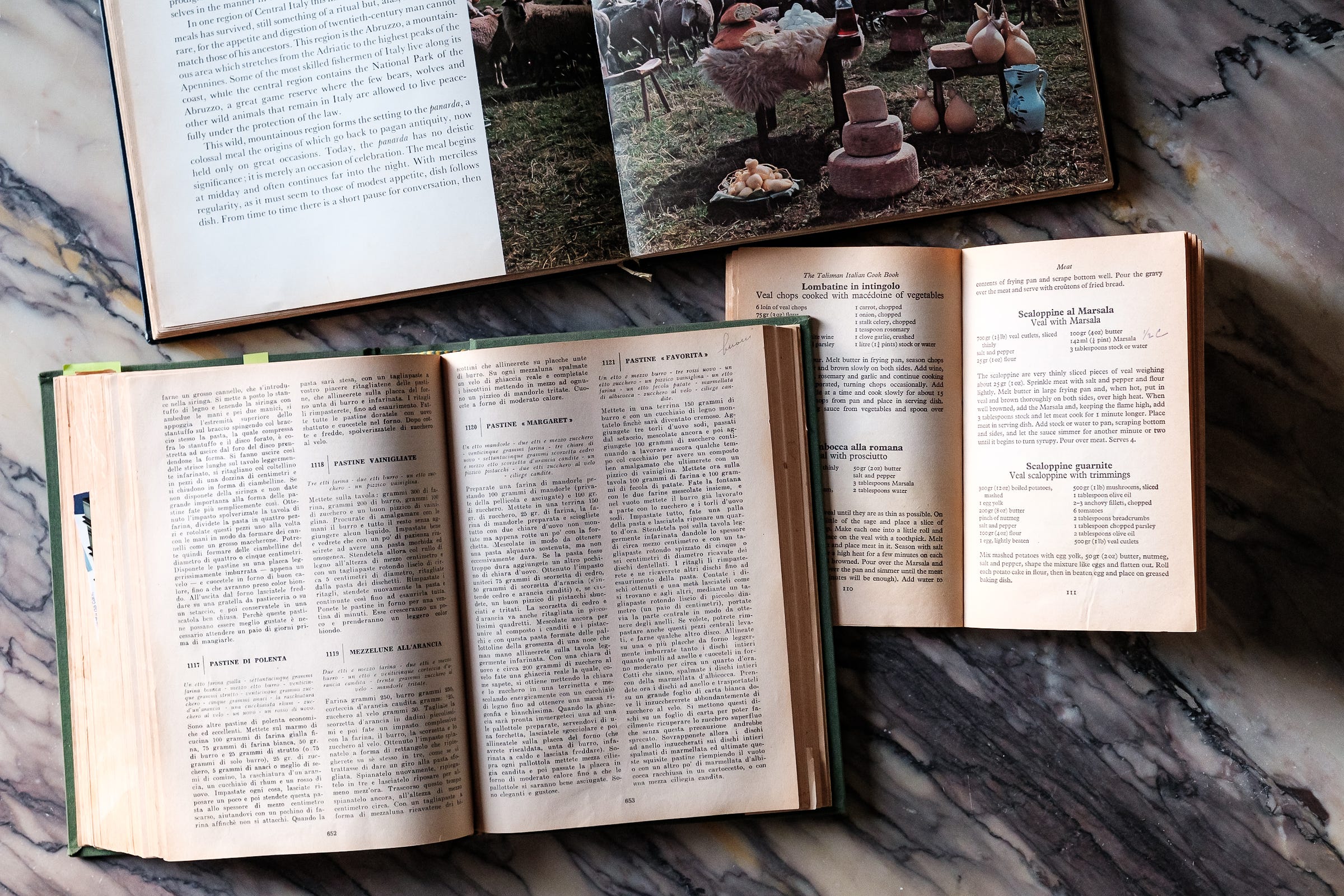
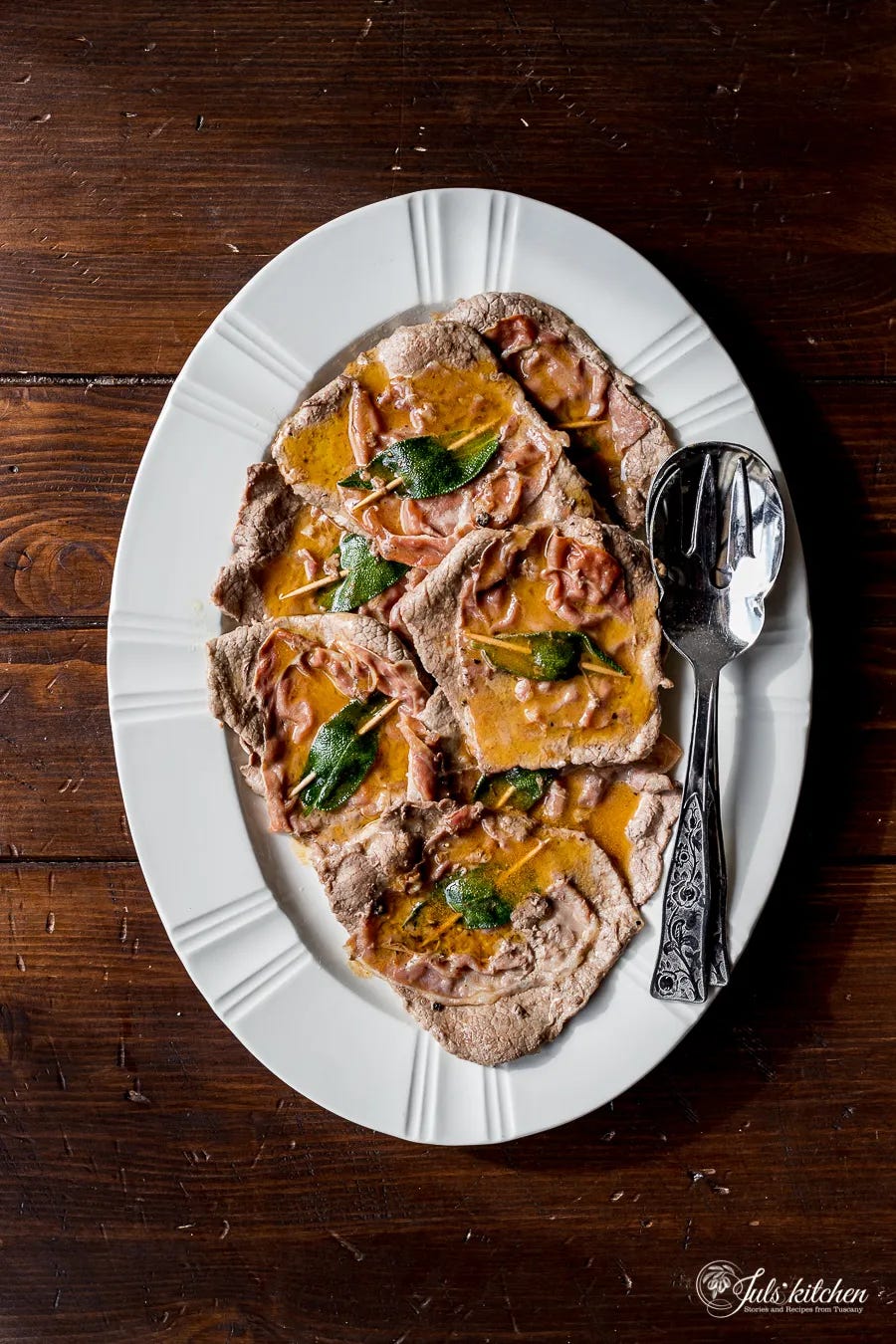

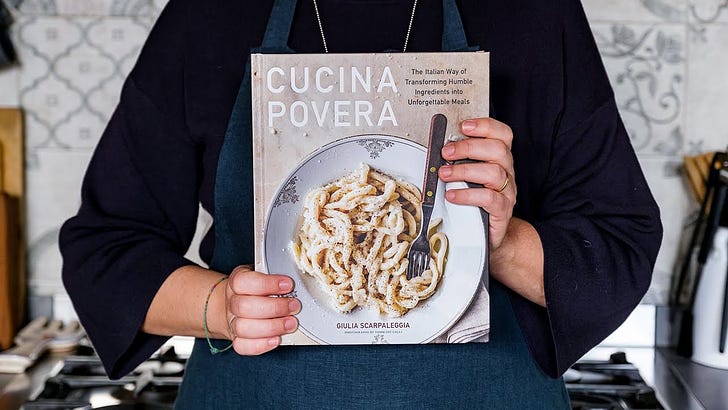
I must find a copy of this cookbook!
Finding margin notes in books is like finding a message in a bottle - a rare thrill! I am also a lover of secondhand clothes, and I love bringing home an item and discovering it has been mended. I imagine the hands busy at work in a quiet moment in the evening, maybe in front of a warm fire, repairing something valued enough to fix. To my mind, its value only increases with the repair.
Your posts are so lively and warm.
I look forward to making Gnocchi alla Romana - I have never tried!
Thanks for this look into the life and career of Ada Boni. I’m lucky to have inherited my mom’s copy, which was given to her when she married my father. In addition to all the recipes, it has beautiful colored illustrations. I treasure it.